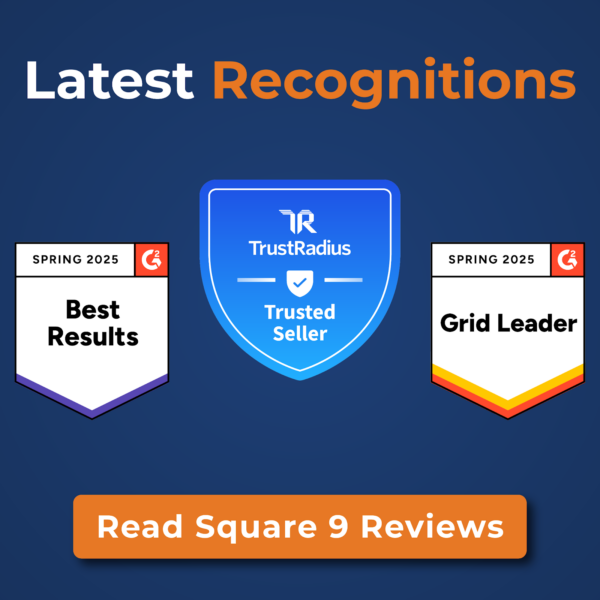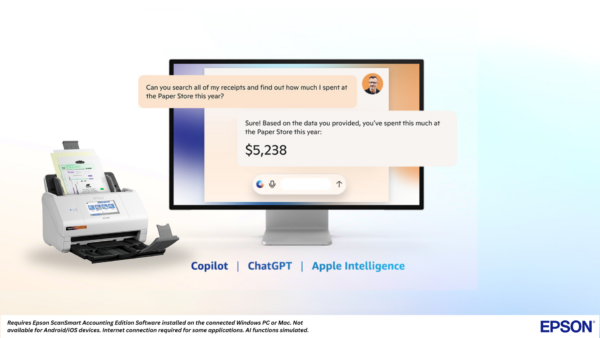The opportunities are waiting for dealers of all sizes.
Since late 2022, the subject of artificial intelligence (AI) has received and generated billions of words, ideas, articles, and businesses. AI, through the introduction of ChatGPT, is the hottest thing going with promises of razor-sharp efficiency and warnings of the deepest, darkest sort; dystopia or utopia, more likely, both.
Now, let’s pivot to a seemingly unrelated yet intrinsically linked domain: office technology dealers. What’s the common thread? Initial resistance to embracing revolutionary technology. Here’s what some dealers are saying today about adopting AI in their businesses:
- “I don’t need AI in my business…”
- “I’m going to wait it out and see what happens…”
- “I’m not technical, I still use paper…”
These phrases seem familiar. Replace “AI” with “MPS” or “digital copiers” or “the internet” or “personal computers,” or “cell phones.” You get my point. For every prior technological advance, some take the wait-and-see approach. With some of those aforementioned technologies, this approach was prudent. Not today, not with AI.
Why? Because advances in AI are moving faster than any other technological stage in history. This isn’t a clarion call to incite fear but to inspire action. The train is moving—don’t be left at the station.
Demystifying AI
Let’s start with demystifying AI and LLMs. I turned to the most popular AI/LLM (large language model) today, ChatGPT4, for a clear and succinct definition. I asked ChatGPT4, “Please define artificial intelligence in three sentences for a 9th-grade student.”
GPT4’s response: “Artificial intelligence, or AI, is a field of computer science focused on creating machines that can perform tasks that typically require human intelligence. This includes things like recognizing speech, making decisions, and understanding languages. AI is about making computers think and learn like humans, helping them solve problems and make life easier.”
And when I asked it to define LLMs.
“Large language models, or LLMs, are advanced AI systems designed to understand and generate human-like text by learning from a vast amount of written information. They work by predicting the next word in a sentence, allowing them to create whole paragraphs of text that can answer questions, author essays, or even create poetry. LLMs are what power chatbots and other tools that can converse or write in a way that feels surprisingly human.”
Indeed, I couldn’t have said it better myself. But let me try:
ChatGPT is a large language model that uses transformers, which are the LLM’s fundamental building blocks. ChatGPT helps AI appear more human as it responds via the language model, enabling it to sound like a human.
Now, how do LLMs and AI compare to search engines? Both LLMs and search engines grant access to a vast array of information. However, how they interact with and present this information is markedly different. Search engines are akin to librarians pointing you to where the information resides. They direct you to indexed information, acting as gatekeepers.
In contrast, LLMs like ChatGPT are more like conversational scholars. They don’t just point you to the information; they synthesize and articulate it in a nuanced, human-like manner. Imagine them as having read all the books in the library and now being ready to engage you in a detailed, contextual conversation about the contents.
We’re just beginning to understand the impacts of AI, let alone finding a shrink-wrapped solution designed by and for businesses. This presents the ultimate conundrum; if we wait to see how things end up, we will be lightyears behind the rest. If we decide to move ahead, there are no benchmarks, roadmaps, guidelines, or guarantees of success. It is a leap of faith but not a lost cause—so let’s embark on an adventure to explore this revolutionary, technological terrain.
Implementing Artificial Intelligence in Your Dealership
Before you start your AI journey, first, invest in a subscription to a language model like ChatGPT, Bard, or Grok. Choose one that aligns with your preferences, just as you would select your favorite bourbon. I’ve been using ChatGPT 4.0 and will switch when a better option emerges.
Second, learn how to prompt. Prompting is asking precise questions in a specific manner, a key skill best learned on your own. Effective prompting leads to accurate responses and fewer hallucinations, which are responses that do not accurately represent the input data or reality.
Third, integrate the AI into your daily routine. This point cannot be overstressed. Daily use will pay off quickly. Using an LLM for summarizing your financials, quick article reviews, and creating complex communications will make it an indispensable tool.
When creating an AI employee policy, remember these three fundamentals:
- Don’t do unethical things.
- Use it every day.
- Have another human review and edit any customer-facing output before sending.
Let’s look at three strategic approaches in your AI venture.
- Finding Your AI Champion
- Illuminating the Opportunity
- Building Your Team
There are few parallels and no models from previous dealers when embracing the AI wave. Nobody has been here before. Yet, we can take a page out of the project management handbook regarding structure. In your quest, you will need a leader.
On your own, without OEM or even AI expert input, you must find a person to head up your expedition. But be warned, this isn’t like finding a project manager for the document management program, a practice manager for your MPS program, or a manager for the IT services department. AI is different.
The selection criteria should include, but not limited to, the following.
- Diverse Expertise and Curiosity: An AI lead should be a versatile generalist with a broad background in various industries, possessing deep knowledge of multiple software solutions and familiarity with different business models. They should have been engaged with AI/LLMs from the very beginning—around the end of 2022.
- Relational and Network Building Skills: They should have proven experience in creating relational networks from the ground up, along with the ability to discern and evaluate potential relationships effectively.
- Independence and Objectivity: This individual mustn’t be currently part of your team, such as a partner, co-owner, or employee. The role’s effectiveness hinges on their ability to maintain some distance from the business, offer objectivity, and deliver a fresh perspective, free from the detailed technicalities of artificial intelligence and the day-to-day complexities of your business.
An AI champion will investigate how integrating the technology can streamline your service ticket lifecycle, from initiation to resolution. This refined process, initially implemented internally, can then be repackaged, and offered to prospects and customers, especially those managing help desks or service technician teams.
Identify Internal Processes That AI Can Improve
An AI champion will examine cost reduction and revenue enhancement through the AI lens, outlining the flow of the entire organization, from the dock to the front door. This effort is a survey at the macro level, not a deep dive into the minutia of every decision process.
Consider this approach akin to a comprehensive needs assessment, providing a broad, 10,000-foot overview of your internal operations, a practice undoubtedly familiar in your business experience.
This AI champion will look for the low hanging fruit for ease of AI integration. The current areas for AI enhancement are:
- Sales: emails, proposals, blogs, and content generation.
- Marketing: presentations, scripts, logos, company content.
- Executive Level: communication, analysis, summaries, generate content.
In general, AI/LLM tools are not failsafe; your content should be reviewed and edited before sending. Still, roughly 80% to 90% of the heavy lifting is accomplished with AI.
Build Your AI Ecosystem
Once you have a basic view of your internal processes and the easiest areas to inject artificial intelligence, you can assemble an AI Team. Although an internal team will evolve, I’m talking about aligning outside resources that will help you with artificial intelligence. Build the external team and the internal will follow.
In the olden days, we would call this building a supply chain or a team of vendors. Both descriptions are flat. Today, we are filling a three-dimensional space with evolving relationships always in flux—an ecosystem of people who can help us and who we can help achieve business goals. Your champion is looking for AI collaborations in and outside our industry.
Start by asking existing vendors/OEMs, document management systems, and data collection agent providers: What are you doing with AI today, and what is on the whiteboard? Having ideas on the whiteboard sounds encouraging, but more likely a red herring.
Also, look at your customer base. Some of your clients have started the journey and may have great insight on applying AI to their business challenges.
In short, you are looking for partners to help you explore and develop an AI go-to-market strategy and connect you with other AI players. The industry is wide open right now with thousands of opportunities on the horizon.
The New World: Sell Your Story of Exploration & Discovery
Your journey in solving your business challenges with AI translates into services you can sell to your prospects, helping them increase sales, reduce costs, and grow profits. These are familiar tactics. We know plenty of dealers that built great internal marketing departments and then sold marketing services to their copier customers.
Did you solve a service ticket challenge with AI? Great, now go sell that same solution to every client with a customer service desk. This is the path; this is the key—turning what you’ve learned into value for your prospects. It’s a value they will gladly pay for.
In the end, copier dealers have another great opportunity to lead prospects into the future, providing guidance, services, and products based on an AI-centric approach. In the case of using technology to solve business problems, we’ve been here before. But what was once helpful may now be a detriment; our past successes can hold us back when we think in the same ways we did then.
This time, the technology is bigger and faster than ever before. Start today.





